TickerTape
Global Digital Currency Updates:
US Banks Stablecoin, South Korea Crypto Regs, BNP Paribas Blockchain and More

This Week’s Stories
- Major U.S. Banks Consider Joint Stablecoin
- South Korea’s Democratic Party Forms Digital Asset Committee
- BNP Paribas Embraces Blockchain
- Tether To Remain Focused on Foreign Markets
- Ruble-backed Stablecoin A7A5 Passes Audit
- Worldpay Teams Up with BVNK for Stablecoin Payouts
- OpenPayd Launches Stablecoin Infrastructure
- Bank of Tanzania to Release CBDC Study
- BIS Working Paper: Stablecoins and Safe Asset Prices
- Santander Explores Stablecoin Offering
- e-Rupee Pilot Expansion
Major U.S. banks, including JPMorgan Chase, Bank of America, Citigroup, and Wells Fargo, are exploring the possibility of launching a joint stablecoin to compete with crypto firms. The initiative is still in early discussions, but it aims to improve transaction speed and efficiency, particularly for international remittances, which currently take days to process through traditional banking systems. The consortium includes payment ventures like Early Warning Services (which operates Zelle) and The Clearing House, which handle real-time payments.
The push for a stablecoin comes as Washington moves toward regulation, with the Senate advancing the Guiding and Establishing National Innovation for U.S. Stablecoin (GENIUS) Act, which aims to create a pro-growth regulatory framework for payment stablecoins. The improved regulatory environment has led crypto firms to seek bank charters, increasing pressure on traditional financial institutions. Some banks have already taken steps in this direction—Société Générale launched a euro-denominated stablecoin (EURCV) in 2023 and is now considering a U.S. dollar stablecoin.
If successful, this stablecoin could be open to other banks beyond the core group, potentially reshaping the financial landscape. By adopting blockchain-based stablecoins, banks aim to enhance security, reduce settlement times, and maintain competitiveness against crypto firms. This move signals a broader shift in the financial sector toward digital assets and blockchain-driven solutions.
Key Takeaways:
- Major U.S. banks are considering launching a joint stablecoin to compete with crypto firms.
- Stablecoins offer faster transactions and improved efficiency, particularly for international payments.
- Regulatory developments, including the GENIUS Act, are shaping the future of stablecoin adoption.
- Crypto firms seeking bank charters are increasing pressure on traditional financial institutions.
- Société Générale has already launched a euro-denominated stablecoin and is exploring a U.S. dollar version.
Why It Matters:
- Financial innovation: Traditional banks are adapting to the rise of digital assets and blockchain technology.
- Competitive response: Banks are seeking ways to counter the growing influence of crypto firms.
- Regulatory clarity: The GENIUS Act could provide a structured framework for stablecoin adoption.
- Faster transactions: Stablecoins could significantly reduce settlement times for cross-border payments.
- Industry transformation: This initiative reflects a broader shift toward digital finance and blockchain integration.
BNP Paribas Asset Management embarks on a pioneering project to tokenize shares of a Luxembourg-based money market fund using blockchain technology. This initiative aims to enhance efficiency, transparency, and accessibility in financial transactions, marking a departure from traditional batch-processing systems. The effort is supported by BNP Paribas Securities Services and Allfunds Blockchain, working together to facilitate seamless fund dealing and transfer services. By leveraging distributed ledger technology (DLT), BNP Paribas seeks to modernize its financial infrastructure and provide real-time access to investment opportunities.
A significant aspect of this project is its connection to the 2024 trials of the Eurosystem wholesale CBDC, which explore how security tokens could revolutionize asset management. Tokenized MMF shares allow instant processing once the net asset value (NAV) is available, eliminating long wait times for investors. Additionally, blockchain adoption in finance facilitates quicker settlements, enhanced security, and greater market accessibility, making investments more efficient. BNP Paribas executives emphasize that native tokenization improves liquidity, shortens settlement periods, and enables seamless integration between traditional and digital assets.
Beyond streamlining institutional transactions, BNP Paribas’ initiative could expand MMF access to retail investors, making it easier for everyday individuals to engage with financial markets. Faster order processing and real-time fund usage position MMFs as more attractive investment vehicles. As financial products move toward digitization, BNP Paribas solidifies its role as a leader in blockchain-driven financial innovation, striving to meet evolving client expectations and industry demands. This move signals a broader shift in global banking, where tokenization could soon become a mainstream element of asset management.
Key Takeaways:
- Tokenized MMF shares improve liquidity, transaction speed, and transparency.
- Blockchain adoption reduces settlement times and operational inefficiencies.
- Institutional partnerships drive technological advancements in asset management.
- Retail investors may gain better access to money market funds through tokenization.
- BNP Paribas’ initiative aligns with ongoing financial sector digitization and CBDC exploration.
Why It Matters:
- Digitization of financial instruments: BNP Paribas is helping modernize asset management by transitioning traditional money market fund shares to blockchain-based tokens. Increased efficiency: Tokenized MMF shares enable instant processing and reduce settlement delays, improving financial operations.
- Enhanced security and transparency: Blockchain ensures secure transactions and provides real-time access to financial data.
- Broader market accessibility: Tokenization may allow retail investors to participate more easily in money market funds.
- Industry transformation: This initiative aligns with ongoing global efforts to integrate CBDCs and tokenized assets into mainstream finance
South Korea’s Democratic Party of Korea (DPK) establishes a Digital Asset Committee ahead of the upcoming elections, signaling a strong focus on crypto regulation and industry reform. The committee aims to modernize digital asset laws, addressing concerns about regulatory uncertainty and positioning South Korea as a global leader in digital finance. The initiative includes academics, industry experts, and exchange representatives, ensuring a broad range of perspectives in shaping national policy. The committee’s first meeting focused on drafting the Basic Digital Asset Act, which will serve as a foundation for future legislation.
A key objective of the committee is to challenge existing regulations, such as the “One Exchange, One Bank” rule, which limits crypto exchanges to working with a single financial institution. The committee seeks to enhance market accessibility and support innovation by creating a more flexible regulatory framework. Additionally, discussions are underway regarding stablecoin oversight, with debates on whether the Bank of Korea or the Financial Services Commission (FSC) should regulate the sector. The committee’s leadership emphasizes the need for clearer guidelines to prevent institutional uncertainty and encourage investment.
By forming this committee, the DPK is making digital assets a central issue in South Korea’s political landscape. The initiative reflects a broader trend of governments integrating blockchain and crypto into mainstream finance. With elections approaching, the committee’s work could shape the future of South Korea’s digital economy, influencing policies that impact both institutional and retail investors. The move highlights the growing importance of crypto regulation in global financial markets.
Key Takeaways:
- South Korea’s Democratic Party launched a Digital Asset Committee to reform crypto regulations.
- Regulatory uncertainty is a major concern, prompting efforts to draft the Basic Digital Asset Act.
- Existing laws, such as the “One Exchange, One Bank” rule, may be revised to improve market flexibility.
- Stablecoin oversight is under debate, with discussions on whether the Bank of Korea or the FSC should regulate the sector.
- The initiative positions South Korea as a potential leader in digital finance and blockchain adoption.
Why It Matters:
- Political focus on crypto: Digital assets are becoming a key election issue, influencing policy decisions.
- Regulatory modernization: The committee aims to update outdated laws and support industry growth.
- Market accessibility: Reforms could make crypto more accessible to both institutional and retail investors.
- Stablecoin regulation: Clearer guidelines could shape South Korea’s approach to digital currencies.
- Global impact: South Korea’s stance on crypto regulation may set a precedent for other nations.
Tether CEO Paolo Ardoino states that the company will continue focusing on foreign markets while the U.S. works through stablecoin regulations. The GENIUS Act, a bill aimed at regulating dollar-pegged crypto assets, is making its way through Congress, but Tether remains committed to international expansion. Ardoino emphasized that Tether is not concerned about competition from major U.S. banks entering the stablecoin space, as its primary customer base consists of unbanked populations worldwide.
Key Takeaways
- Tether will prioritize foreign markets despite ongoing U.S. regulatory developments.
- The GENIUS Act seeks to regulate stablecoins in the U.S., distinguishing between foreign and domestic issuers.
- Tether stopped serving U.S. customers in 2018 and remains focused on compliance while expanding internationally.
- The company is not worried about competition from major U.S. banks, as its target audience is the unbanked population.
Why It Matters
- The GENIUS Act could shape the future of stablecoin regulation in the U.S..
- Tether’s decision to focus on foreign markets highlights the global demand for stablecoins, particularly in regions with limited banking access.
- The company’s stance on compliance and regulation may influence other stablecoin issuers and their strategies.
A7A5, a ruble-pegged stablecoin, successfully completes an independent audit confirming 100% fiat backing for its circulating supply. Conducted by Kreston Bishkek, the audit verified that all issued tokens are fully backed by Russian ruble reserves. Unlike Tether, which has yet to undergo a similar review, A7A5 follows a state-supervised issuance model and undergoes quarterly audits to ensure transparency.
The stablecoin was launched earlier this year under Kyrgyzstan’s regulatory framework, making it one of the first stablecoins issued with government oversight in Central Asia. A7A5’s reserves generate yield for holders, leveraging Russia’s high interest rates, with a portion of earnings automatically distributed to users daily. The token trades on Meer Exchange, a licensed Kyrgyz digital asset exchange, and will soon expand to decentralized exchanges for broader access.
With an initial circulating supply exceeding $140 million, A7A5 has gained traction among Russian and CIS crypto users seeking alternatives to USD-backed stablecoins. Given Russia-Kyrgyzstan financial ties and ongoing cross-border crypto initiatives, A7A5 could become a key player in ruble-based digital transactions.
Key Takeaways
- A7A5 passed an independent audit, confirming full ruble-backed reserves.
- Operates under state-supervised issuance and undergoes quarterly audits for transparency.
- Generates yield for holders via the Russian Central Bank interest rates.
- Listed on the Meer Exchange with plans for expansion to decentralized exchanges.
- It could serve as a regional bridge currency between Russia, Kyrgyzstan, and Central Asia.
Why It Matters
- Strengthens trust in fiat-backed stablecoins, particularly non-USD alternatives.
- Demonstrates how state-regulated crypto frameworks can enhance credibility.
- Growing demand for ruble-pegged assets amid geopolitical shifts in global finance.
- Sets a precedent for regulatory-backed stablecoin models in emerging markets.
Worldpay partners with BVNK to introduce stablecoin payouts, allowing merchants to send payments to employees, contractors, and third parties without holding stablecoins themselves. This collaboration integrates BVNK’s embedded wallet system into Worldpay’s existing payouts platform, expanding digital payment options for businesses.
This is not Worldpay’s first engagement with stablecoins. In 2022, it began supporting merchant settlements using USDC, and it has also been active in blockchain infrastructure, operating nodes on platforms like Klaytn and Hedera. The new stablecoin payout feature is expected to launch in a pilot phase during the second half of 2025.
The announcement comes amid growing investment in stablecoin infrastructure. Earlier this month, Visa invested €2 million ($2.27 million) in BVNK, valuing the company at around $625 million. Other firms, including Stripe and MoonPay, have also made significant acquisitions in the space, reflecting the increasing momentum behind stablecoin adoption.
Key Takeaways
- Stablecoin payouts for merchants: Worldpay is integrating BVNK’s stablecoin infrastructure into its payouts service, allowing businesses to send payments digitally.
- No need for merchants to hold stablecoins: BVNK’s embedded wallet system ensures merchants can process stablecoin payments without managing digital assets directly.
- Expanding Worldpay’s crypto initiatives: Worldpay previously supported USDC settlements and operated blockchain nodes on networks like Klaytn and Hedera.
- Pilot launch expected in H2 2025: The service will be tested before wider adoption, reflecting cautious but growing corporate interest in stablecoin payments.
- Increasing investment in stablecoin infrastructure: Visa’s recent €2 million investment in BVNK, alongside Stripe’s and MoonPay’s acquisitions, signals strong momentum in the sector.
Why It Matters
- Advancing mainstream stablecoin adoption: This partnership bridges the gap between traditional finance and crypto, making stablecoin payments more accessible to businesses.
- Faster and more cost-effective global transactions: Stablecoin payouts offer efficiency and transparency compared to conventional banking methods.
- Sign of corporate confidence in digital assets: Major payment providers like Worldpay and Visa embracing stablecoins could accelerate industry-wide adoption.
- Competitive positioning in digital payments: With growing demand for blockchain-based financial solutions, Worldpay strengthens its role as a leader in payment innovation.
OpenPayd launches a new stablecoin infrastructure designed to help businesses seamlessly manage both fiat and digital assets within a single platform. By connecting local and global fiat rails to major blockchains, the company aims to make money movement more efficient, enabling businesses to conduct instant cross-border transactions with stablecoins and widely adopted digital assets. This integration enhances treasury management by reducing the cost and complexity of currency exchanges while providing businesses with a faster, regulated entry into the digital asset economy.
The new stablecoin capabilities allow companies to on-ramp and off-ramp between traditional and digital currencies, optimizing financial workflows and payments. OpenPayd’s infrastructure leverages an extensive banking network and regulatory licenses, including a newly acquired virtual asset license in Europe, with further expansion plans. Businesses can integrate stablecoin functions within weeks through OpenPayd’s proprietary system, significantly reducing the time required to adopt digital asset solutions.
With over €130 billion in annualized transaction volume and 750+ clients across various industries, OpenPayd is positioned to accelerate stablecoin adoption and market capitalization. By facilitating billions in transaction volume through trusted fiat channels, OpenPayd aims to bridge the gap between traditional finance and digital assets, reinforcing stablecoins as a key pillar of the evolving global financial system.
Key Takeaways
- Seamless fiat-to-digital asset movement: OpenPayd connects local and global fiat rails to major blockchains, enabling businesses to move money instantly.
- Stablecoin on-ramps and off-ramps: Businesses can exchange fiat and digital assets efficiently, reducing costs and improving transparency in cross-border payments.
- Treasury management enhancements: Companies can streamline currency exchanges and cross-border transactions with OpenPayd’s platform.
- Quick integration for businesses: Firms can implement stablecoin capabilities within weeks via OpenPayd’s proprietary system.
- Regulatory expansion: OpenPayd recently secured a virtual asset license in Europe, with plans for further global licensing.
Why It Matters
- Accelerating stablecoin adoption: OpenPayd’s scale and infrastructure can materially grow stablecoin usage and market capitalization.
- Bridging fiat and digital finance: The platform provides businesses with a secure, regulated entry point into digital assets, solving key payment challenges.
- Advancing real-time cross-border payments: Stablecoin integration enables faster, more cost-effective global transactions.
- Strengthening corporate digital finance strategies: As stablecoins gain traction, businesses will increasingly require solutions like OpenPayd’s infrastructure.
- Catalyst for broader digital economy growth: OpenPayd processes over €130 billion annually, positioning itself as a major player in stablecoin-enabled financial services.
The Bank of Tanzania (BoT) is set to release a study examining the feasibility of a Central Bank Digital Currency (CBDC) and its potential impact on the country’s financial system. The study will assess the benefits and risks of introducing a digital version of the Tanzanian shilling, providing insights into how such a currency could enhance payment systems and financial inclusion. BoT has been exploring CBDCs since January 2023, taking a cautious, phased approach to digital monetary policy.
The report will serve as a roadmap for potential CBDC implementation, analyzing experiences from other countries to identify opportunities and challenges. While CBDCs are government-backed digital currencies, BoT maintains its stance against privately issued cryptocurrencies, citing concerns over money laundering, terrorism financing, and financial stability risks. The study aligns with broader East African Community (EAC) efforts to regulate digital finance and establish clear policies for emerging financial technologies.
Tanzania’s approach to digital currency regulation remains conservative, with the Tanzanian shilling as the only legal tender.
Key Takeaways:
- Bank of Tanzania’s study on CBDCs: The central bank is evaluating the feasibility of a digital shilling.
- Potential impact on financial systems: The study will assess how a CBDC could enhance Tanzania’s payment infrastructure and financial inclusion.
- Guiding national policy: The report will outline benefits, risks, and a roadmap for possible CBDC adoption.
- Tanzania maintains a ban on cryptocurrencies: While CBDCs are government-backed, BoT continues to prohibit privately issued digital assets.
- Regional collaboration on digital finance: The study aligns with broader East African Community (EAC) efforts to regulate digital currencies.
Why It Matters:
- Shaping Tanzania’s digital financial future: The study could lead to the introduction of a government-backed digital currency.
- Enhancing financial inclusion: A CBDC could provide more accessible banking solutions for underserved populations.
- Regulatory clarity on digital assets: The report may influence Tanzania’s stance on cryptocurrencies and blockchain technology.
- Aligning with global trends: Many central banks worldwide are exploring CBDCs, and Tanzania’s study positions it within this movement.
- Potential economic impact: A well-implemented CBDC could improve transaction efficiency and monetary policy effectiveness.
A new BIS Working Paper investigates whether stablecoin flows exert measurable demand pressures on US Treasury yields. This paper examines the impact of dollar-backed stablecoin flows on short-term US Treasury yields using daily data from 2021 to 2025.
As of March 2025, stablecoins collectively managed over $200 billion in assets, surpassing the short-term US securities holdings of major foreign investors. In 2024, stablecoin issuers purchased $40 billion worth of US Treasury bills, rivaling the largest government money market funds. This increasing involvement in traditional financial markets has raised concerns about their impact on monetary policy and financial stability
The research finds that stablecoin inflows reduce three-month Treasury yields by 2–2.5 basis points within ten days, while outflows have a stronger effect, raising yields by 6–8 basis points. The impact is largely concentrated in short-term securities, with minimal spillover into longer-term maturities. Among stablecoin issuers, Tether (USDT) and Circle (USDC) have the most influence on Treasury market movements.
Key Takeaways:
- Stablecoins manage over $200 billion in assets: Their holdings now exceed those of major foreign investors in short-term US securities.
- Increasing purchases of US Treasury bills: In 2024, stablecoin issuers bought $40 billion in Treasury securities, matching major government money market funds.
- Stablecoin flows influence short-term Treasury yields: Inflows (funds into stablecoins) lower yields by 2–2.5 basis points, while outflows (stablecoins into fiat) raise them by 6–8 basis points.
- Tether (USDT) and Circle (USDC) have the most impact: These stablecoins drive the majority of Treasury market movements.
- Implications for financial stability and policy: Stablecoins are becoming significant players in traditional finance, necessitating regulatory attention.
Why It Matters:
- Stablecoins are reshaping traditional financial markets: Their presence in Treasury securities could influence US monetary policy.
- Growing concerns over financial stability: Rapid stablecoin expansion introduces new risks, particularly in volatile market conditions.
- Potential regulatory challenges: Transparency in stablecoin reserves and their interactions with financial institutions may require increased oversight.
- Bridging cryptocurrency and mainstream finance: Stablecoins are integrating deeper into regulated markets, blurring distinctions between digital and traditional assets.
- Market stress scenarios: During financial instability, stablecoin outflows could cause disruptions in US Treasury markets.
Banco Santander SA is considering expanding its digital asset services, with early-stage plans to introduce a stablecoin and provide retail cryptocurrency access through its digital bank, Openbank. Openbank has applied for licenses under the European Union’s new Markets in Crypto-Assets (MiCA) regulation. Santander is exploring stablecoins pegged to both euros and dollars, with dollar-denominated tokens proving particularly useful in Latin American markets where the bank has a strong customer base.
Stablecoins, which maintain a constant value against fiat currencies, have become increasingly popular as payment rails and investment tools. The market has reached $250 billion, with major issuers like Tether earning billions in yield from their U.S. Treasury holdings. Santander is evaluating whether to create its own stablecoin or integrate an existing one. While stablecoins are widely used for crypto trading, their role in cross-border payments and settlements is expanding.
Major financial institutions are also moving into the stablecoin space. Some U.S. banks are considering issuing a joint stablecoin, and regulatory developments could push the stablecoin market to $2 trillion by 2028. Santander has been an early adopter of blockchain technology, investing in startups like Ripple Labs and working on tokenized bond issuances. Openbank could launch crypto services as soon as this year, pending regulatory approval.
Key Takeaways:
- Santander is considering stablecoin issuance denominated in euros and dollars.
- Retail crypto services expansion: Openbank has applied for EU licenses to offer cryptocurrency access.
- Stablecoins gaining traction in Latin America: Dollar tokens are widely used in economies with weaker currencies.
- Stablecoin market is now valued at $250 billion, with major players earning yield on U.S. Treasury holdings.
- Industry-wide stablecoin initiatives: U.S. banks are exploring joint stablecoin issuance, and regulations could push the market to $2 trillion by 2028.
- Santander’s blockchain involvement: The bank has invested in blockchain startups and worked on tokenized bond issuances.
Why It Matters:
- European banks are embracing digital assets, following regulatory changes.
- Stablecoins are expanding beyond crypto trading to cross-border payments and settlements.
- Regulatory shifts are shaping financial innovation, influencing stablecoin adoption.
- Potential economic impact: Stablecoins could reshape financial infrastructure and banking operations.
The Reserve Bank of India (RBI) is advancing its digital rupee pilot, introducing programmability and offline payment capabilities to enhance financial inclusion. These features aim to extend the applicability of the CBDC in regions with limited internet access while enabling customized payments for government subsidies and corporate spending.
The digital rupee pilot has two versions: retail and wholesale CBDCs. The retail pilot conducted with select customers and merchants through 17 participating banks, has reached 600,000 users. To further scale adoption, the RBI has allowed certain non-banks to offer CBDC wallets. Meanwhile, the wholesale pilot, primarily focused on interbank transactions, has seen growing institutional interest, with the addition of four standalone primary dealers (SPDs).
As India explores new use cases for its CBDC, these developments signal broader ambitions to modernize digital payments, improve accessibility, and integrate blockchain-based monetary tools into the financial system.
Key Takeaways
- Programmability & offline payments introduced to expand digital rupee use in areas with limited internet access.
- Retail digital rupee pilot reaches 600,000 users across 17 banks, with non-bank entities now authorized to offer wallets.
- Wholesale CBDC pilot expands, adding four standalone primary dealers (SPDs) to test interbank transactions.
- RBI aims to improve financial inclusion and enable tailored payments for government and corporate use cases.
- India continues its phased approach to developing a central bank digital currency.
Why it Matters
- Expanding financial access: Offline capabilities help regions with poor connectivity benefit from digital transactions.
- Customizing payments: Programmability enables precise government subsidies and corporate expenditure control.
- Growing adoption of CBDCs: Scaling up the retail pilot signals increasing user engagement in digital currency use.
- Institutional interest: Wholesale CBDC participation suggests potential transformation in interbank settlements.
- India’s digital finance ambitions: The RBI’s push positions India as a key player in the global CBDC movement.





